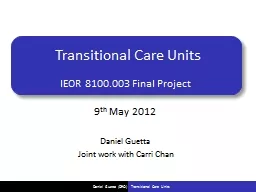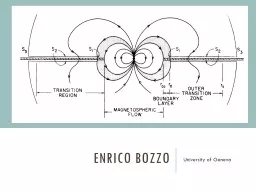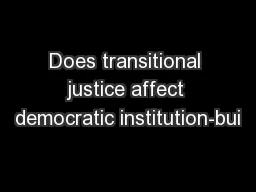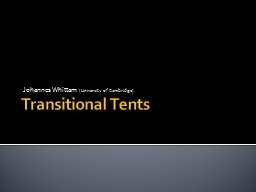PPT-Transitional Care Units
Author : SkylineBabe | Published Date : 2022-08-03
IEOR 8100003 Final Project 9 th May 2012 Daniel Guetta Joint work with Carri Chan This talk Hospitals Bayesian Networks Data Modified EM Algorithm First results
Presentation Embed Code
Download Presentation
Download Presentation The PPT/PDF document "Transitional Care Units" is the property of its rightful owner. Permission is granted to download and print the materials on this website for personal, non-commercial use only, and to display it on your personal computer provided you do not modify the materials and that you retain all copyright notices contained in the materials. By downloading content from our website, you accept the terms of this agreement.
Transitional Care Units: Transcript
Download Rules Of Document
"Transitional Care Units"The content belongs to its owner. You may download and print it for personal use, without modification, and keep all copyright notices. By downloading, you agree to these terms.
Related Documents














